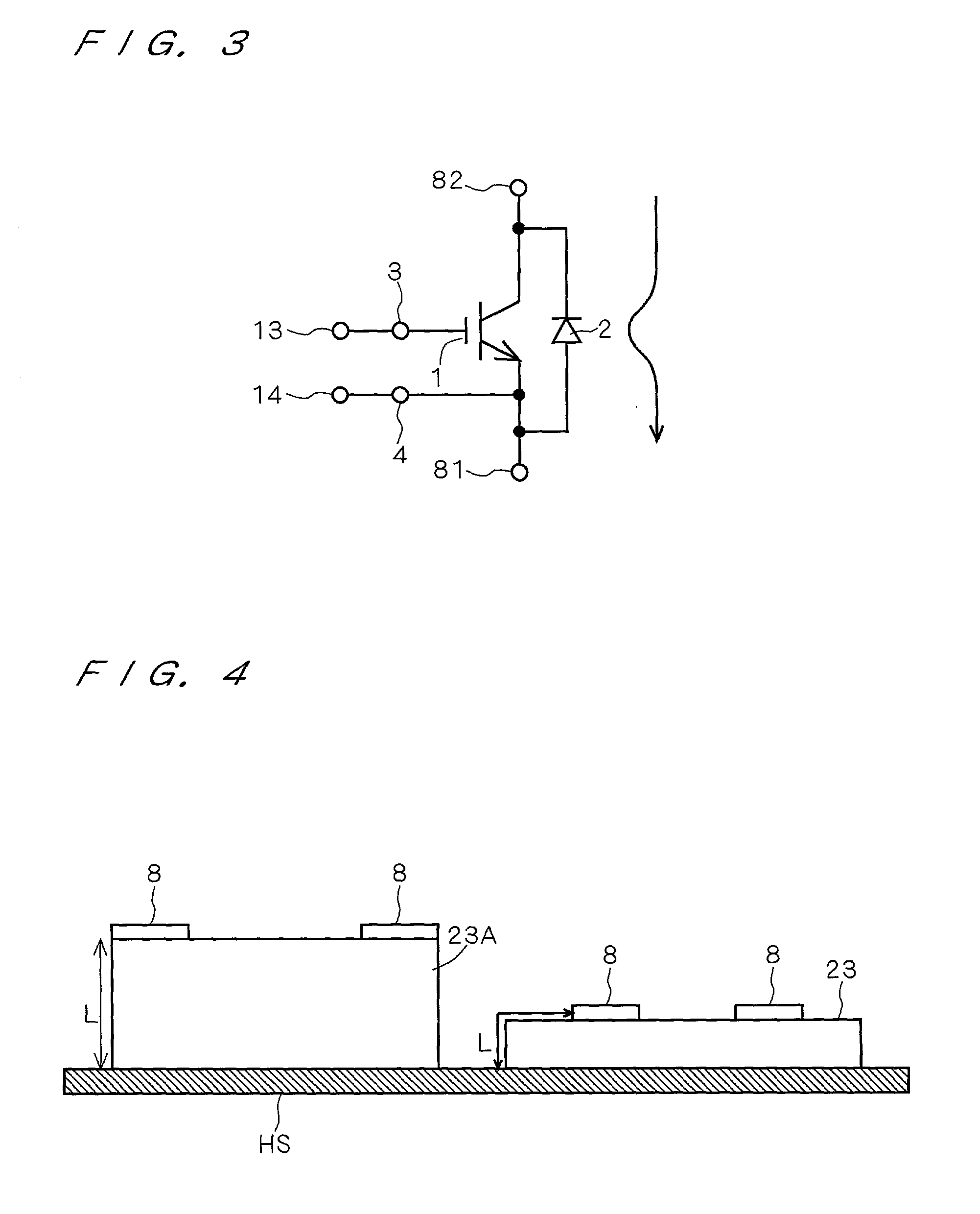Semiconductor device
a technology of semiconductor devices and circuits, applied in semiconductor devices, semiconductor/solid-state device details, electrical apparatus, etc., can solve the problems of poor layout efficiency, inconvenient for semiconductor devices, and loss due to electrical resistance, so as to maintain radiation performance, improve layout efficiency, and reduce the effect of loss
- Summary
- Abstract
- Description
- Claims
- Application Information
AI Technical Summary
Problems solved by technology
Method used
Image
Examples
Embodiment Construction
[0158] FIG. 10 shows a cross section view of the configuration of the semiconductor device M201 as a modified example of the semiconductor device M200. The configuration of the semiconductor device M201 is essentially the same as that of the semiconductor device M200 which is described in reference to FIGS. 7 and 8 and the same symbols are attached to the same components and repetitive explanations are omitted.
[0159] The semiconductor device M201 is different from the semiconductor device M200 in the point that the bordering parts between the body part 23 1B and electrode protruding parts 232B are parts having curved surfaces RP with a curvature.
[0160] By adopting such a fillet structure in the case that the external conductors and the external connection electrode plates 8B are fastened with bolts in the electrode protruding parts 232B, the stress caused in the border parts between the body part 231B and the electrode protruding parts 232B becomes small even when the bolt is fasten...
PUM
 Login to View More
Login to View More Abstract
Description
Claims
Application Information
 Login to View More
Login to View More - R&D
- Intellectual Property
- Life Sciences
- Materials
- Tech Scout
- Unparalleled Data Quality
- Higher Quality Content
- 60% Fewer Hallucinations
Browse by: Latest US Patents, China's latest patents, Technical Efficacy Thesaurus, Application Domain, Technology Topic, Popular Technical Reports.
© 2025 PatSnap. All rights reserved.Legal|Privacy policy|Modern Slavery Act Transparency Statement|Sitemap|About US| Contact US: help@patsnap.com



